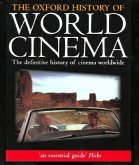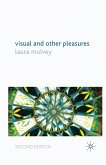Cinema by Other Means explores an extraordinary history, stretching from the 1910s to the present: it is a study of various avant-garde endeavors to practice the cinema by using the tools, the materials, the technology, and the techniques, which either modify or are entirely different from those associated with the standard film apparatus. Using examples from both the historical and the post-war avant-garde--Dada, Surrealism, Letterism, "structural-materialist" film, and more--the book tells the tale of the multiple conditions of cinema; of a range of peculiar and imaginative ways in which filmmakers, artists, and writers have pondered and created, performed and transformed, the "movies"--with or without directly grounding their work in the materials of film. Throughout, Levi considers works by filmmakers, artists, and theorists from all over Europe--France, Italy, Soviet Union, Germany, Hungary--with a special emphasis on the Yugoslav avant-garde. This is the first study to offer the English-language reader a thorough explication of an assortment of distinctly Yugoslav artistic phenomena, such as the Zenithist cine-writings of the 1920s, the proto-structural Antifilm movement of the early 1960s, and the "ortho-dialectical" film-poetry of the 1970s.
Cinema by Other Means recounts the history of para-cinema--the long tradition within the avant garde of adapting and avoiding the tools, materials, technologies, and techniques of conventional film-making. Levi's study considers groundbreaking works by filmmakers, artists, and theorists from France, Italy, the Soviet Union, Germany, Hungary, and Yugoslavia.
Cinema by Other Means recounts the history of para-cinema--the long tradition within the avant garde of adapting and avoiding the tools, materials, technologies, and techniques of conventional film-making. Levi's study considers groundbreaking works by filmmakers, artists, and theorists from France, Italy, the Soviet Union, Germany, Hungary, and Yugoslavia.








